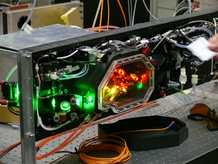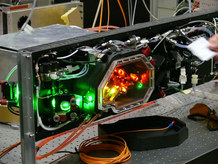Detailed description of the research activities

The Earth’s atmosphere contains 21% oxygen and it is uniquely oxidising. The oxidation processes transform natural and anthropogenic gases into products that can be more easily removed from the atmosphere through wet and dry deposition. This mechanism removes a multitude of gases that would otherwise accumulate and create a hothouse effect – rather than a greenhouse effect – or be toxic for life.
This self-cleaning capacity of the atmosphere is regulated by radical reaction cycles that have some resemblance to those in combustion processes, in which hydrocarbons are oxidised to carbon dioxide and water vapour. On a global scale many gases, notably reactive carbon and nitrogen compounds, can have profound effects on the abundance of atmospheric oxidants. We investigate to what extent natural and anthropogenic emissions influence the self-cleaning capacity, and how they contribute to regional and global changes of our atmosphere and climate.
Our research focuses on photo-oxidation mechanisms which play a central role in the self-cleaning mechanism. We develop highly sensitive instrumentation to measure trace gases, including reactive radicals that occur in minute amounts, to uncover the photochemical reaction chains. We have specialized in the construction of instrumentation for application on aircraft. Laser-optical, mass spectrometric and gas chromatographic techniques, for example, are used to determine the key breakdown products of hydrocarbons. Our studies include laboratory investigations, field measurements on aircraft and ships, and the use of satellite observations. We develop computer models to simulate the interactions of chemical and meteorological processes, and investigate the influences of atmospheric composition changes on climate.
